difference between horsepower and CC | small engine
- By BISON
Table of Contents
Imagine your pressure washer, water pump, or generator roaring to life at the turn of a key. Providing the power you need to get the job done, your small engine is the beating heart of these indispensable machines. Small engines pack a punch in a remarkably compact package, whether you’re blasting away grime, pumping volumes of water, or lighting up a campsite.
Small engines, typically ranging from 25 to 500 cc in displacement, and their most common applications are pressure washers, which use high-pressure jets to clean surfaces, water pumps that transfer or circulate water, and portable generators that supply electricity during outages or in remote locations. However, when you’re in the market for a small engine, you might be bombarded with a plethora of technical specifications. Two of the most crucial yet often misunderstood metrics are cubic centimeters (cc) and horsepower (hp).
In this blog post, BISON will discuss the difference between cc and horsepower, providing a clear understanding of their significance and assisting you in making informed decisions when selecting a small engine for your needs.
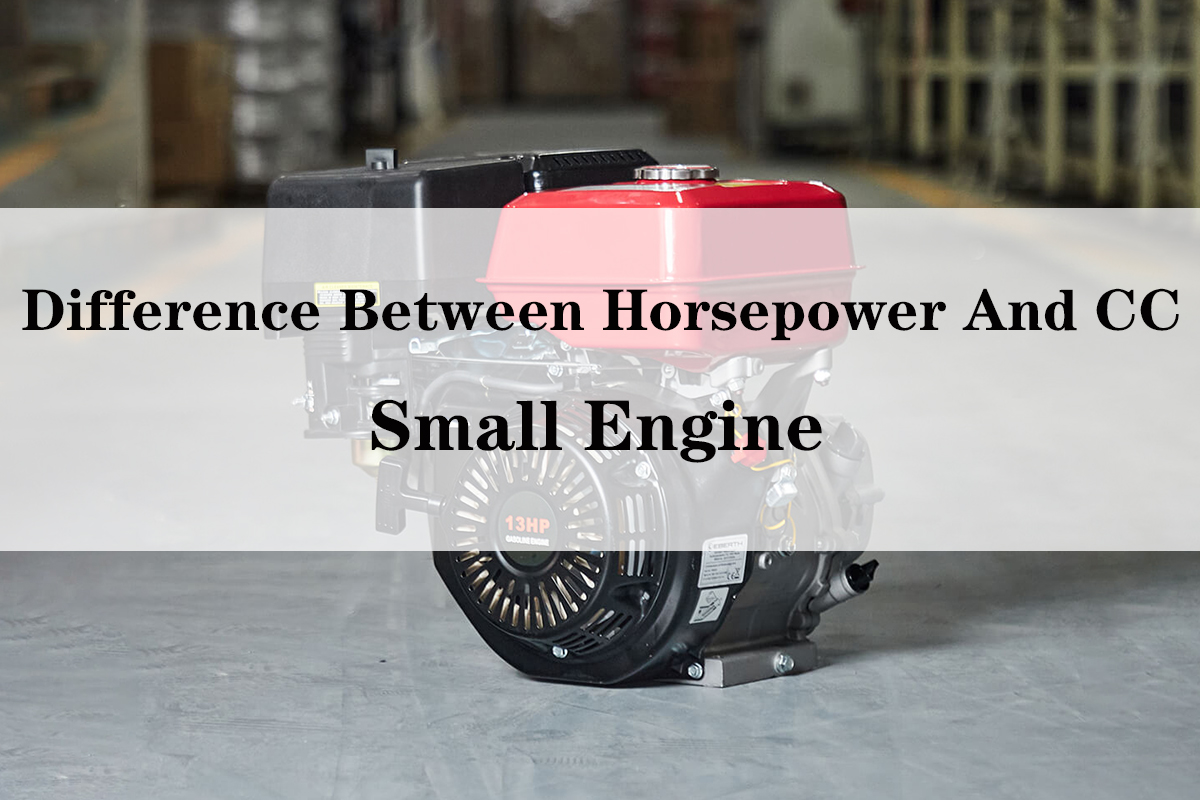
In the early periods of engine development, the concept of a powerful engine was a large volume, which meant more engine power and torque. Nowadays, more attention is focused on developing small engines. These engines are compact, making them perfect for portable or small-scale applications where space and weight are important considerations.
Engine displacement or cubic capacity is the primary data that every manufacturer presents with the first engine specifications.
What is CC?
Displacement refers to the volume of the cylinder(s) where the air-fuel mixture is burned. It is calculated by considering the bore (diameter) of the cylinder, the stroke (distance the piston travels within the cylinder), and the number of cylinders.
To elaborate, if you visualize the cylinder as a cylindrical container, displacement is essentially the space inside that container where combustion occurs. This volume determines the amount of air and fuel that the engine mixes and burns at a time, which affects the total performance of the engine.
What is horsepower?
Horsepower (HP) is a unit of power that represents the rate at which work is done. The term is derived from the output of a single horse. It was coined by the engineer James Watt. One horsepower is defined as 550 foot-pounds per second. This means that if a force of 550 pounds is exerted over a distance of one foot in one second, the power required is one horsepower.
In the context of engines, horsepower is a measure of the engine’s power output. It is one of the details of how the engine is released and at what rate it releases the engine power (which is never the maximum speed an engine can achieve). Essentially, horsepower indicates how much work the engine can perform over a specific period.
More horsepower means the engine can do more work in less time. For example, two engines of the same displacement can have different power ratings because of their design and efficiency. A higher horsepower engine will generally provide faster acceleration, lift more, or operate a machine more powerfully.
Explanation of the relationship between CC and horsepower
In the most crucial part of our article, BISON will discuss with you in depth the difference between cc and hp. The relationship between cc and hp is complex and challenging to explain because it depends on many factors. Cc and hp are not the same, but there is a general relationship between the two.
Nature of the measurement
- Cubic centimeters: The ‘cubic capacity’ measured in cc refers to the overall volume of the engine – all cylinders included. This volume can also be thought of as the engine’s size or displacement. It indicates the engine’s capacity to hold a mixture of air and fuel for combustion.
- Horsepower: HP is the unit of power measurement (measured in kilowatts) and is usually calculated as peak power. It measures the rate at which an engine can perform work, specifically 550 foot-pounds of work per second. This essentially reflects the engine’s ability to convert fuel into usable mechanical energy.
Analogies for better understanding
At BISON, we have an interesting analogy that can help you better understand the concepts of cc and hp:
Think of cc as the size of a glass – how much liquid (mixture of air and fuel) the glass has the potential to hold.
Think of hp as the amount of juice in the glass. The juice represents the actual power or useful energy derived from the liquid.
A larger jar (higher cc) has the potential to hold more liquid (fuel and air mixture). However, the actual amount of juice (hp) you get depends on how efficiently you fill the glass and the liquid quality.
Correlation, but modern technological advancements
Although cc and hp measure different things, they are related:
Generally, a higher cc usually means the engine has the potential to produce more hp because it can burn more fuel each cycle. However, this relationship is not always direct or linear. The design and efficiency of the engine play significant roles.
Today’s engineering advancements allow for the development of engines with lower displacement (low cc) but high horsepower. For instance, a large engine (high cc) might not yield high horsepower if it is not designed efficiently. Conversely, a smaller engine (low cc) can produce high horsepower with modern engineering and technology, which is highly efficient and environmentally friendly.
For example:
- Different CCs and different hpoutputs:
Imagine two machines with different cc’s:
Machine A: 210 cc engine
Machine B: 389 cc engine
Machine B, with a larger displacement, generally has the potential to produce more horsepower when measuring the amount of juice in a glass (available power). However, if Machine A (BISON BS168F) is more technologically advanced in design and efficiency, it may produce comparable or even more horsepower than Machine B.
- Same displacement, different hp:
Consider two engines with the same displacement:
Engine X: 420 cc, producing 13 hp
Engine Y: 420 cc, producing 15 hp
For example, turbocharged engines can compress more air into the cylinders, allowing for more fuel to be burned and, thus, increasing horsepower without increasing the engine’s size. Engine Y (BISON BS190F) uses advanced technologies to extract more power from the same volume.
Understanding the nuanced interplay between cc and hp helps in assessing an engine’s performance. While the cc gives an idea of the potential capacity, the hp measures the actual power output and efficiency. Modern technological advances allow lower displacement engines to produce more power, emphasizing the importance of a comprehensive approach to engine design and evaluation.
Conclusion
In summary, the main differences between cc and hp lie in what each metric measures and their implications for engine performance. Horsepower represents an engine’s power, the ability to do work per unit of time. Cubic centimeters represent the engine’s volume. Understanding both cc and hp is crucial to choosing the right engine for your needs. While cc indicates the engine’s size and potential, hp reveals its actual power and efficiency. You can make an informed decision that meets your specific needs by understanding how these metrics interact. If you need assistance in selecting the right engine based on either cc or hp, please contact BISON for a detailed brochure. Or contact us for our personalized customization service. As a professional Chinese engine company, BISON’s team of experts will provide you with the engine that best suits your needs.FAQs
Besides CC and HP, what other factors should I look for when choosing an engine?
While cc and hp are crucial, other factors play a role in determining an engine’s final power output. These factors include:
- Engine design (2-stroke vs. 4-stroke)
- Fuel system efficiency
- RPM (Revolutions Per Minute)
- Compression ratio
- Air intake and exhaust systems
Together, these components have an impact on how efficiently an engine converts potential fuel energy into actual mechanical power. That’s why it’s important to consider these factors, as well as displacement and horsepower, in any assessment of engine performance.
What is the typical CC range for different applications?
Different applications require different power outputs, so they are equipped with engines of different displacements:
Pressure washers: These engines typically range from 160cc to 500cc. Depending on pressure requirements and application. Higher-pressure models for commercial use generally have larger displacements.
Generators: Portable generators often range from 80cc for smaller, more portable models, to more than 400cc for larger, more powerful units that can provide longer duration power.
In the case of water pumps, displacement will vary depending on the flow rate and pressure required; low-flow pumps may have engines as small as 50 cc, while high-flow pumps can exceed 300 cc.
How many CCs equal one hp?
The conversion factor between CCs and horsepower varies from engine to engine. 32.5 cc is equal to 1 horsepower for most small engines.
Interestingly, you can convert the cc of a generator to hp by calculating 32.2 cc ≈ 1 hp.
For example, a 0.27–liter four engine or 270cc can produce 270: 32.5 = 8.3 hp. Note that this method is only used on small four-cylinder generators and is not very accurate.
Below is a common cc-hp conversion table for small engines:
Cubic centimeters (cc) | Horsepower (hp) approx. |
| 200 cc | 4.5-5.5 hp |
| 300 cc | 6.5-7.5 hp |
| 400 cc | 8.5-9.5 hp |
| 500 cc | 10.5-11.5 hp |
Most Popular Posts
QUESTIONS?
CONTACT US TODAY.
buy?
Related Posts
how to clean a small engine
By reading this article, you will gain a complete understanding of the intricacies of cleaning your small engine and how this regular maintenance can keep your engine running at its best
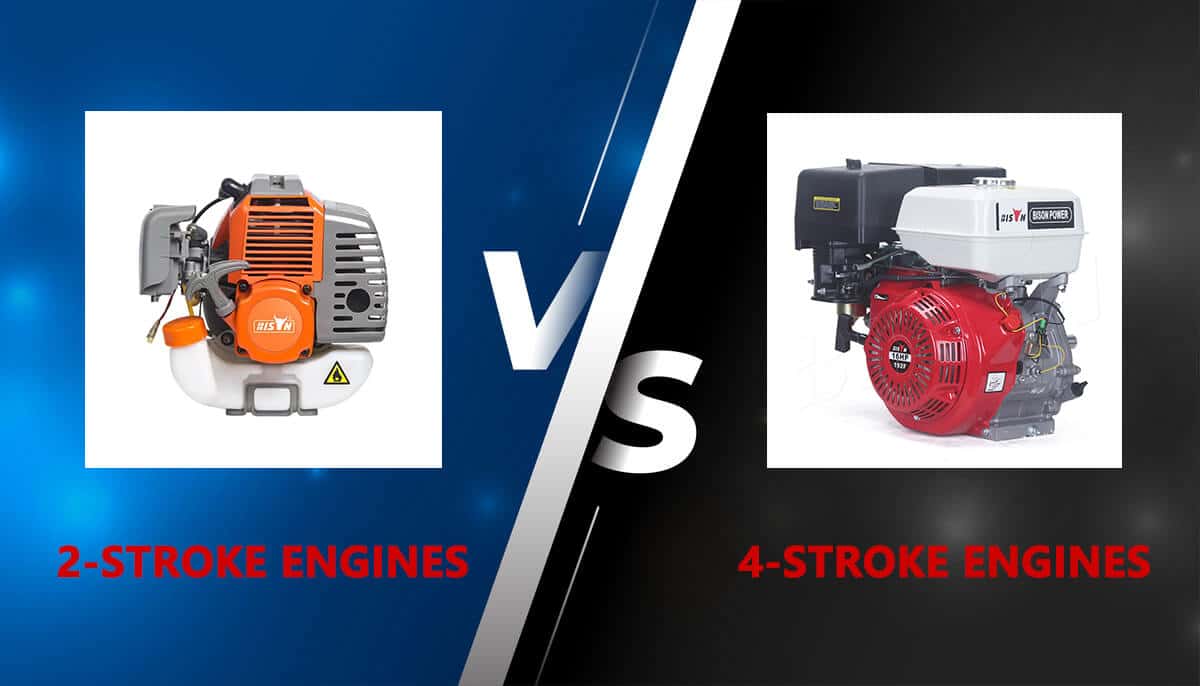
What’s the difference between 2-stroke & 4-stroke engines?
Want to know the difference between 2-stroke & 4-stroke engines? Here is the article which will let you know of every single detail and in depth analysis of both types of engines.
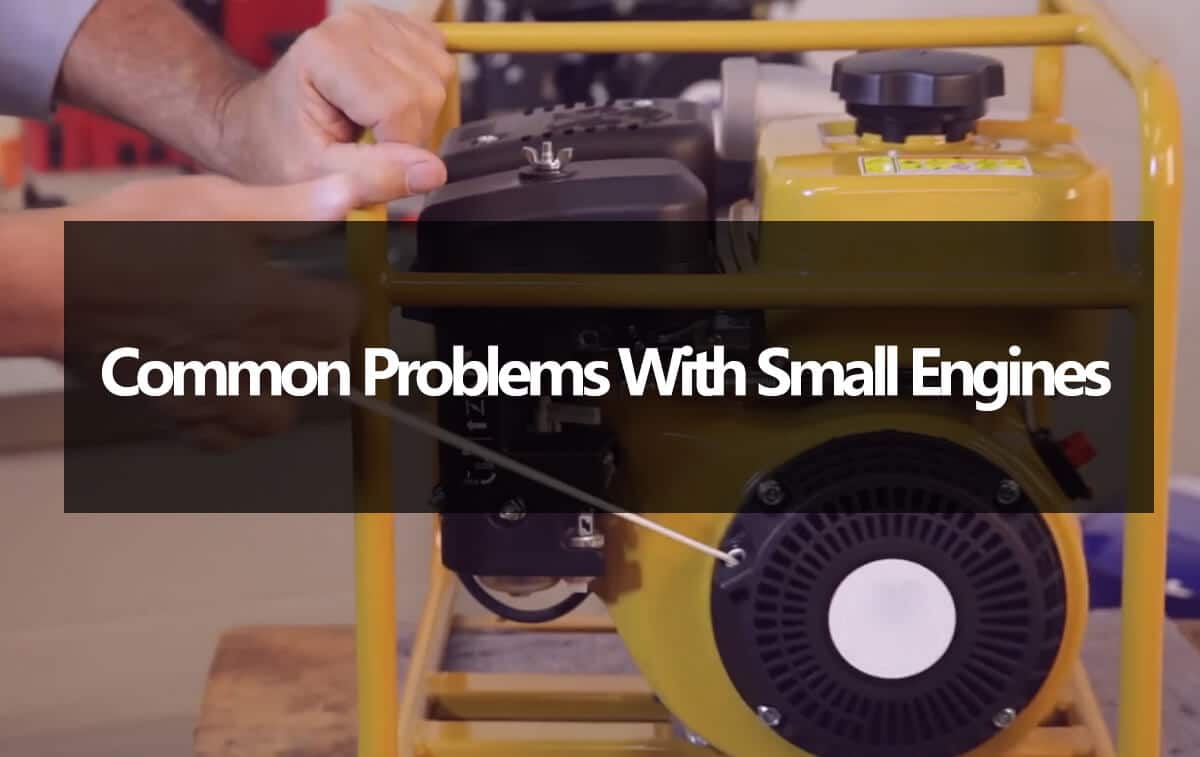
Common problems with small engines
In this article, we delve into the world of small engines, unearthing common problems that can arise and how to restore engine performance.
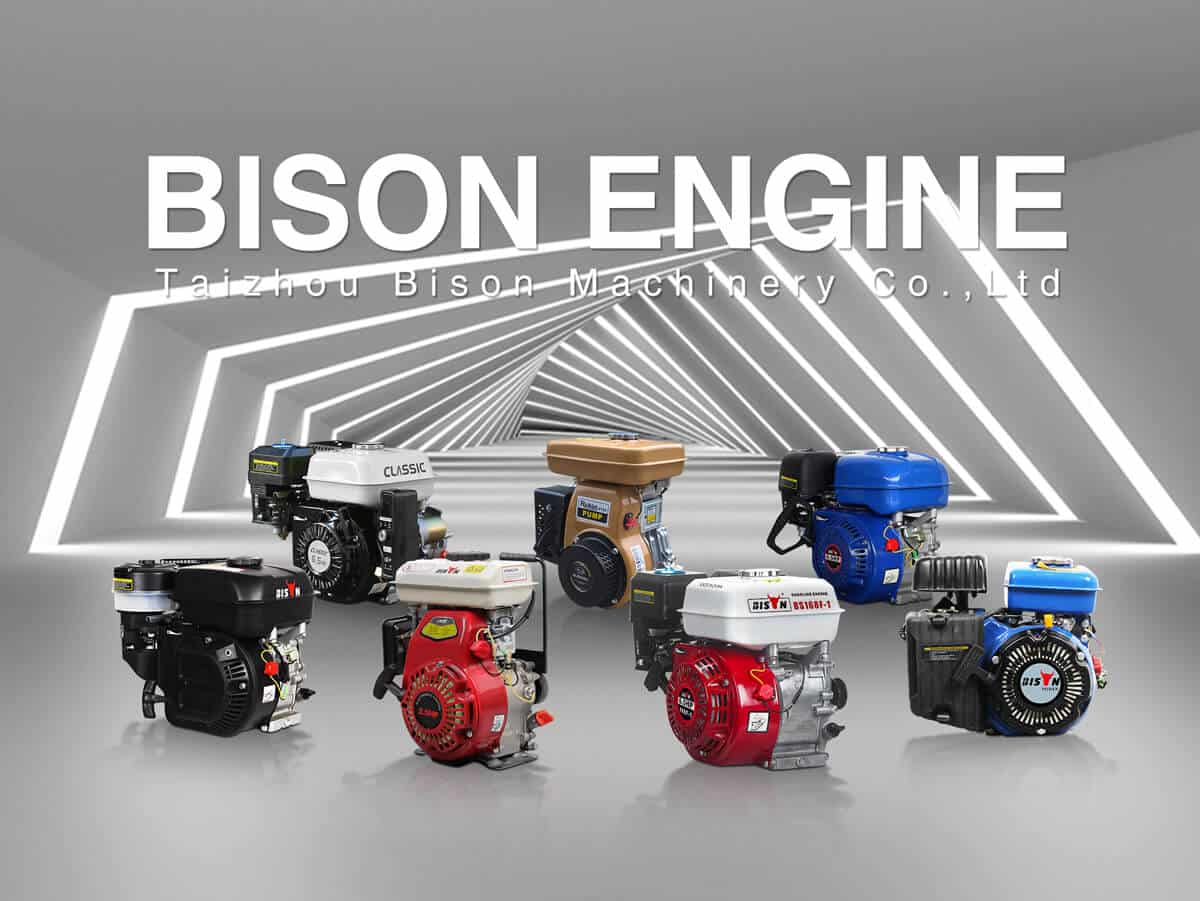
Small engine: Everything you need to know
In this comprehensive guide, BISON will delve deep into the world of small engines, shedding light on their history, various types, workings, and maintenance.
Related Products

small portable gasoline inverter generator
Using 100% copper wire alternator, the small portable gasoline generator is in compliance with CE
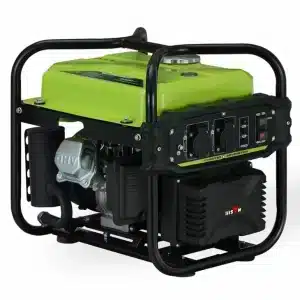
lightweight silent gasoline inverter generator
Ultra-quiet, lightweight, and powerful: introducing the BISON BS-Q2000ix gasoline inverter generator Imagine the convenience of
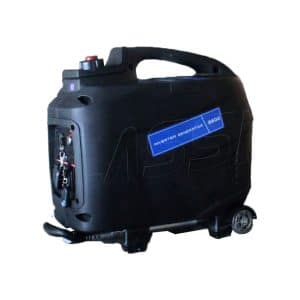
best inverter generator
China best inverter generator — BISON inverter generator It has super overloaded capability, which can
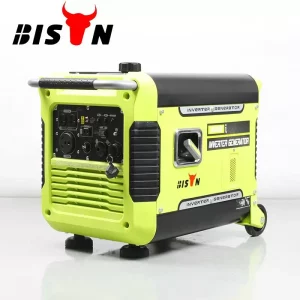
silent gasoline inverter generator for camping
Enjoy a quiet and powerful source of electricity while camping with the BISON BS-Q3000i Silent
.png)
-qbpqbzxxvtguiuwezisu6wo6j1i29b4m1el1ir1u8o.png)

